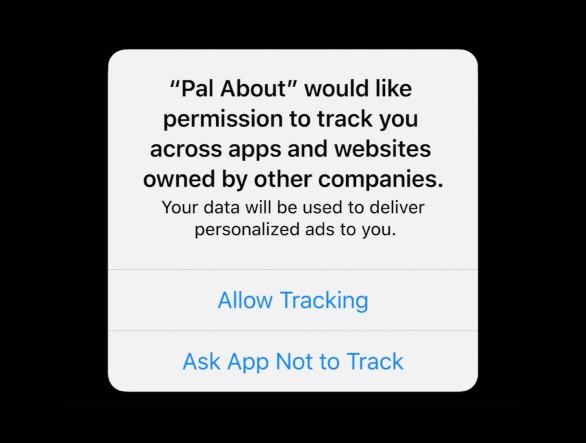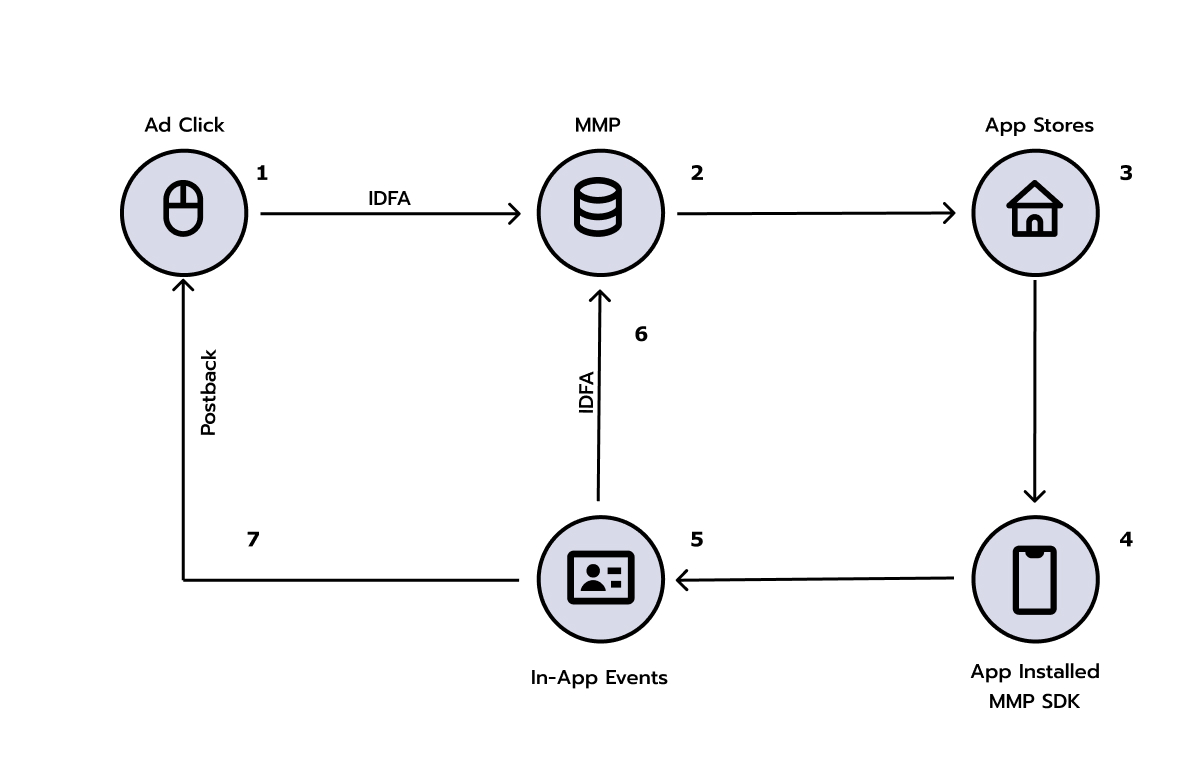The Devastating Impact Of iOS 14 On Performance Marketing

Apple dropped a huge bomb when they announced their new user privacy regulation at the WWDC (World Wide Developer Conference) 2020, in late June 2020.
I would not be surprised if most marketers are oblivious to what the effects are on their app marketing campaigns with this new paradigm shift. And the ones that are aware of the new privacy regulation are probably ill-prepared when it comes to running campaigns as of iOS 14.
So what exactly is this changing?
In short, as of iOS 14 people will have to opt-in to be tracked in an alarming pop-up consent form, for each app.
If the user doesn’t opt-in, then the Identifier for Advertisers (IDFA) will be returned with a string of 0s. Effectively removing the capability of targeting, measuring attribution, and optimizing based on conversion value. I think it is safe to assume that the opt-in rate will be vanishingly low for most businesses.
The release date is yet to be set in stone but it was cautiously expected that Apple would release it to the public as soon as mid-September 2020.
However, due to the industry widespread unpreparedness, Apple has delayed the requirement for apps to start obtaining permission to track until the beginning of next year (2021).
What is IDFA?
The IDFA is a semi-permanent unique device identifier that Apple introduced in an early step to increase privacy. The IDFA is a string of random numbers and doesn’t reveal any personal identifiable information. It is semi-permanent because a user can at any time reset this identifier in the settings app of their iPhones.
Prior to the IDFA, advertisers and marketers could measure the effectiveness of their iOS campaigns using the permanent iPhone UDID (Unique Device Identifiers). Because this immutable identifier offered limitless tracking in perpetuity it was not privacy-safe. The IDFA was introduced to marketers instead in 2012 as a replacement.
The IDFA is a central mechanism that underpins app attribution, optimization, and targeting today.
How Mobile Attribution Works Before iOS 14?
The mobile attribution model consists of basically three components.
- Measuring the initial ad click
- Attributing app events, such as installs and conversions, to clicks
- Notifying the marketing vendors of the attributed app events through server postbacks
We typically use Mobile Measurement Partners (MMPs) to handle this process. The major MMP platforms are Adjust and AppsFlyer.
The attribution flow looks something like this:

- User clicks on an ad from ad network and is redirected to the MPPs platform
- MPP records the IDFA in database and redirects the user to an app store
- User downloads the app
- User opens the app, activating the MMP SDK
- MPP SDK sends IDFA and install event, as well as subsequent app events, back to the MPP server
- MPP match the device collected IDFA to the click IDFA in database
- Once app event is attributed, postback with the conversion details are sent back to the ad network
How Mobile Attribution Works After iOS 14
Given that the above-illustrated process will no longer work, unless the user actually does op-in and gift you with their IDFA, you are probably left with a new attribution and tracking framework called the SKAdNetwork.
What is SKAdNetwork?
The SKAdNetwork is practically Apple’s version of an MMP. It is a service that logs clicks from ads and interfaces directly with ad networks to postback attributed conversions. The difference is that it allows for app attribution while preserving privacy. It does so by allowing the advertiser to measure the success of their campaigns on an anonymous aggregated level instead of giving access to detailed user-level data. A bit similar to how you would view your standard traffic reports in Google Analytics. This means that there is no access or drill-down to individual users.
But this is where it becomes hairy. You can only send 1 attributed postback for each app user. That means one conversion per user. But you can have different conversion types. In the SKAdNetwork postback call there is a conversionValue parameter. The conversionValue can accept up to 64 different values. Thankfully, you can utilize this parameter to map up to 64 different in-app events as conversion goals. But note, only one of them will be sent for that particular user as an attributed conversion.
That is not all. Which conversion goal will be sent is based upon which mapped event has the highest conversionValue, within a certain time-span. So you need to think through how you map these in-app events to the conversionValue parameter. For example in an onboarding optimized campaign, you would map each step in the funnel with incremental mapped values. That way, you are sure to send the furthest and the most valuable conversion step.
Finally, we need to consider the aforementioned time-span component. The updated events are determined by introducing a series of timers that must expire before the final updated postback conversion is fired. It is a very convoluted process but in essence, whenever an install is attributed, a rolling 24-hour window is initiated counting down to 0. The timer is reset whenever a conversion event update is triggered. Once the timer hits 0, the attributed postback is passed on to the ad network. Hence, if there is a lag over 24h between two onboarding steps, the latter and potentially subsequent steps won’t be sent as the final postback. This introduction of timers will delay and obfuscate the conversion reporting substantially. We won’t be collecting all conversion of a certain event and we won’t have the data anywhere near real-time.
Closing Remarks
In summary, iOS 14 will have a massive impact on app marketing. Without IDFA - in-app retargeting, lookalike audiences, and real-time feedback loops - goes out the window. Tools like DSPs on the programmatic side and MMPs will be severely affected.
SKAdNetwork is a life rope in a world without IDFAs but it is a pretty crude one. Marketers need to regardless grasp this rope and start rethinking how fundamentally different they will have to optimize their campaigns as of now.
